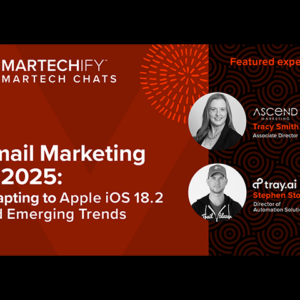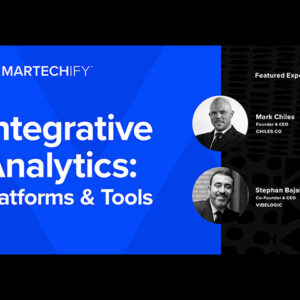Paid Media Strategies for 2024 and Beyond
Hyper-personalization: crafting bespoke experiences
In the realm of paid media, hyper-personalization stands out as a transformative trend, driven by advanced data analytics and machine learning algorithms. Marketers are leveraging these technologies to gain deep insights into consumer behavior, preferences, and intent, allowing for the creation of highly targeted and personalized ad experiences that resonate on a personal level.
This trend is a direct response to the saturation of digital content and the ever-increasing expectations of consumers. With so much information bombarding individuals on a daily basis, generic and broad messaging simply doesn’t cut it anymore. Consumers crave relevance and value in the content they consume, and hyper-personalization enables brands to deliver exactly that.
By analyzing vast amounts of data, including past interactions, browsing behavior, purchase history, demographic information, and even sentiment analysis from social media, marketers can segment their audience into highly specific groups. These segments can then be targeted with tailored messages, offers, and recommendations that align with their interests, needs, and preferences.
For example, an e-commerce retailer can use hyper-personalization to deliver product recommendations based on a customer’s past purchases, browsing history, and items they’ve added to their cart but haven’t purchased yet. This level of personalization not only increases the likelihood of a conversion but also enhances the overall customer experience by making it more relevant and convenient.
Moreover, hyper-personalization extends beyond just ad targeting. It encompasses the entire customer journey, from awareness to conversion and beyond. Brands can personalize website content, email marketing campaigns, push notifications, and even offline experiences based on individual preferences, creating a seamless and cohesive brand experience across all touchpoints.
As technology continues to evolve, the capabilities of hyper-personalization will only expand. Machine learning algorithms will become more sophisticated, enabling real-time personalization and predictive modeling that anticipates customer needs before they’re even expressed. This level of proactive engagement can significantly enhance customer loyalty and lifetime value.
In essence, hyper-personalization is not just a trend but a fundamental shift in how brands communicate and connect with their audience. It’s about treating each customer as a unique individual with distinct preferences and expectations, and delivering experiences that are tailored to their specific needs and desires.
Omnichannel integration: Creating cohesive brand experiences
The rise of omnichannel advertising is reshaping how brands engage with consumers across various touchpoints. Integrated campaigns that span social media, search engines, display networks, and emerging channels like connected TV (CTV) are becoming the norm. This approach offers a unified brand experience and maximizes reach and engagement by meeting consumers where they are in their journey.
Omnichannel integration is driven by the shifting behavior of consumers, who no longer follow linear paths to purchase. Instead, they interact with brands through multiple channels and devices, often switching between them seamlessly. For marketers, this presents both challenges and opportunities.
On one hand, the fragmentation of media channels makes it challenging to maintain consistency in messaging and branding. Each channel may have its own audience demographics, user behavior patterns, and content formats, requiring tailored strategies for each platform. However, this diversity also allows for more targeted and personalized communication, as marketers can leverage the unique strengths of each channel to deliver relevant content to specific audience segments.
For example, a retail brand adopting an omnichannel approach may use social media for brand awareness and engagement, search ads for capturing intent-driven searches, display ads for retargeting website visitors, and email marketing for nurturing leads and encouraging repeat purchases. By orchestrating these channels cohesively, the brand can guide consumers through a seamless and integrated journey from discovery to conversion.
Moreover, omnichannel integration extends beyond just advertising. It encompasses the entire customer experience, including pre-purchase research, post-purchase support, and ongoing engagement. Brands that excel in omnichannel marketing prioritize consistency, convenience, and personalization across all touchpoints, ensuring a positive and memorable experience at every interaction.
The key to successful omnichannel integration lies in data and technology. Marketers need robust data analytics capabilities to track customer interactions across channels, identify patterns and preferences, and optimize campaign performance in real time. Integrated marketing platforms and automation tools also play a crucial role in orchestrating omnichannel campaigns efficiently and effectively.
As consumer expectations continue to evolve, brands must evolve with them by embracing omnichannel marketing strategies. Those that can deliver seamless and cohesive brand experiences across multiple channels will not only drive engagement and conversions but also build long-term customer loyalty and advocacy.
Technology innovation: Embracing AR, VR, and AI
The convergence of paid media with emerging technologies like augmented reality (AR), virtual reality (VR), and artificial intelligence (AI) is unlocking new possibilities for marketers. These technologies enable interactive and immersive ad experiences, streamline campaign management processes, optimize ad placements, and enhance performance through real-time optimizations.
Augmented reality (AR) and virtual reality (VR) are revolutionizing how brands can engage and immerse their audiences. AR allows for interactive experiences where digital elements are overlaid onto the real world, while VR creates fully immersive environments that transport users to virtual worlds. Both technologies have applications across various industries, from retail and entertainment to education and healthcare.
For example, a furniture retailer can use AR to allow customers to visualize how a piece of furniture would look in their own home before making a purchase. This not only enhances the shopping experience but also reduces buyer hesitation and returns, leading to higher customer satisfaction and loyalty. Similarly, VR can be used to create virtual showrooms or experiences that showcase products in a dynamic and engaging way.
Artificial intelligence (AI) is another game-changer in the realm of paid media. AI-powered algorithms can analyze vast amounts of data, optimize ad placements in real time, personalize content based on user behavior, and predict future trends and consumer preferences. This level of automation and intelligence not only improves campaign performance but also frees up marketers to focus on strategic initiatives and creative endeavors.
For instance, AI-driven predictive analytics can help marketers identify high-value customer segments, anticipate their needs, and tailor messaging and offers to resonate with them. This proactive approach not only increases conversion rates but also enhances customer satisfaction and lifetime value.
Furthermore, AI is revolutionizing the way ads are created and optimized. Generative AI algorithms can automatically generate ad creatives, headlines, and copy variations based on performance data and audience feedback. This iterative approach allows for rapid testing and optimization, leading to higher engagement and ROI.
In conclusion, technology innovation is reshaping the landscape of paid media by enabling interactive and immersive experiences, streamlining campaign management, optimizing ad performance, and personalizing content at scale. Marketers who embrace AR, VR, AI, and other emerging technologies will stay ahead of the curve and deliver compelling experiences that captivate audiences and drive business results.
Authentic content creation: Fostering genuine connections
In the modern landscape, compelling content remains king, but authenticity, transparency, and purpose-driven storytelling are becoming increasingly important. Brands that authentically connect with their audience, address societal issues, and align with values are not only driving conversions but also building long-lasting relationships and fostering brand loyalty.
Authentic content resonates with consumers on a deeper level because it reflects genuine values, beliefs, and experiences. It’s not about flashy advertisements or empty promises but rather about creating meaningful connections and fostering trust. Authenticity is especially crucial in an era where consumers are increasingly skeptical of traditional marketing tactics and crave genuine interactions with brands.
One of the key drivers of authentic content creation is purpose-driven storytelling. Brands that stand for something beyond just profit and sales, and actively contribute to social or environmental causes, resonate with consumers who share similar values. This authenticity creates a sense of belonging and community, leading to stronger brand loyalty and advocacy.
For example, a sustainable fashion brand that promotes ethical sourcing, fair labor practices, and environmental stewardship not only attracts eco-conscious consumers but also differentiates itself in a crowded market. By authentically communicating its values and commitment to sustainability through compelling storytelling, the brand builds a loyal customer base that values its ethos and mission.
Transparency is another pillar of authentic content creation. Consumers today demand transparency from brands in terms of product quality, pricing, business practices, and data privacy. Brands that are open, honest, and forthcoming in their communications build trust and credibility with consumers, leading to stronger brand affinity and loyalty.
Moreover, authenticity extends to the way content is produced and presented. User-generated content (UGC) and influencer partnerships can add authenticity and relatability to brand messaging, as they showcase real people using and endorsing products in authentic settings. This type of content resonates with audiences because it feels genuine and relatable, rather than overly polished or staged.
In summary, authentic content creation is essential for fostering genuine connections with consumers and building long-term brand loyalty. By prioritizing transparency, purpose-driven storytelling, and relatability, brands can create compelling content that resonates with audiences on an emotional level and drives meaningful engagement and loyalty.
Advanced analytics: Holistic measurement and optimization
The measurement and attribution of paid media efforts are evolving towards more holistic and accurate metrics. Multi-touch attribution models, cross-device tracking, and advanced analytics tools provide marketers with a comprehensive view of the customer journey. This enables data-driven decision-making and optimization strategies that yield tangible ROI and drive business growth.
Gone are the days of relying solely on last-click attribution or basic metrics like clicks and impressions. Today’s marketers have access to sophisticated analytics platforms that track customer interactions across multiple touchpoints and devices, allowing for a deeper understanding of attribution and campaign effectiveness.
Multi-touch attribution models assign value to each touchpoint along the customer journey, from awareness to conversion and beyond. This helps marketers identify which channels and tactics are driving engagement, influencing purchase decisions, and ultimately contributing to revenue generation. By attributing value accurately, marketers can allocate budget and resources more effectively, optimizing campaigns for maximum ROI.
Cross-device tracking is another critical aspect of advanced analytics in paid media. With consumers using multiple devices throughout their journey, from smartphones and tablets to desktops and smart TVs, it’s essential to track and connect these interactions to gain a comprehensive view of customer behavior. Cross-device attribution allows marketers to understand how different devices contribute to conversions and tailor strategies accordingly.
Advanced analytics tools, powered by AI and machine learning, provide real-time insights and predictive modeling capabilities. These tools can analyze vast amounts of data, identify patterns and trends, predict future outcomes, and recommend optimization strategies. This level of automation and intelligence streamlines campaign management processes, improves decision-making, and enhances overall performance.
Moreover, advanced analytics enable marketers to move beyond vanity metrics and focus on meaningful KPIs that align with business goals. Metrics like customer lifetime value (CLV), return on ad spend (ROAS), and attribution lift help measure the true impact of paid media efforts and justify investments.
In conclusion, advanced analytics play a crucial role in paid media campaigns by providing holistic measurement, accurate attribution, and actionable insights. Marketers who leverage multi-touch attribution, cross-device tracking, and advanced analytics tools can optimize campaigns effectively, drive tangible ROI, and fuel business growth in a data-driven era.
Sources
- Paid Media Marketing In 2024: 7 Changes Marketers Should Make – Search Engine Journal
- Paid Media: Definition, Types, and Tips for Effective Marketing in 2024 – Mayple
- The Complete Guide to Paid Social: 2024 Trends and Predictions – MarinSoftware
- 13 Paid Media Trends To Watch Out For [Updated for 2024] – Growth Collective













